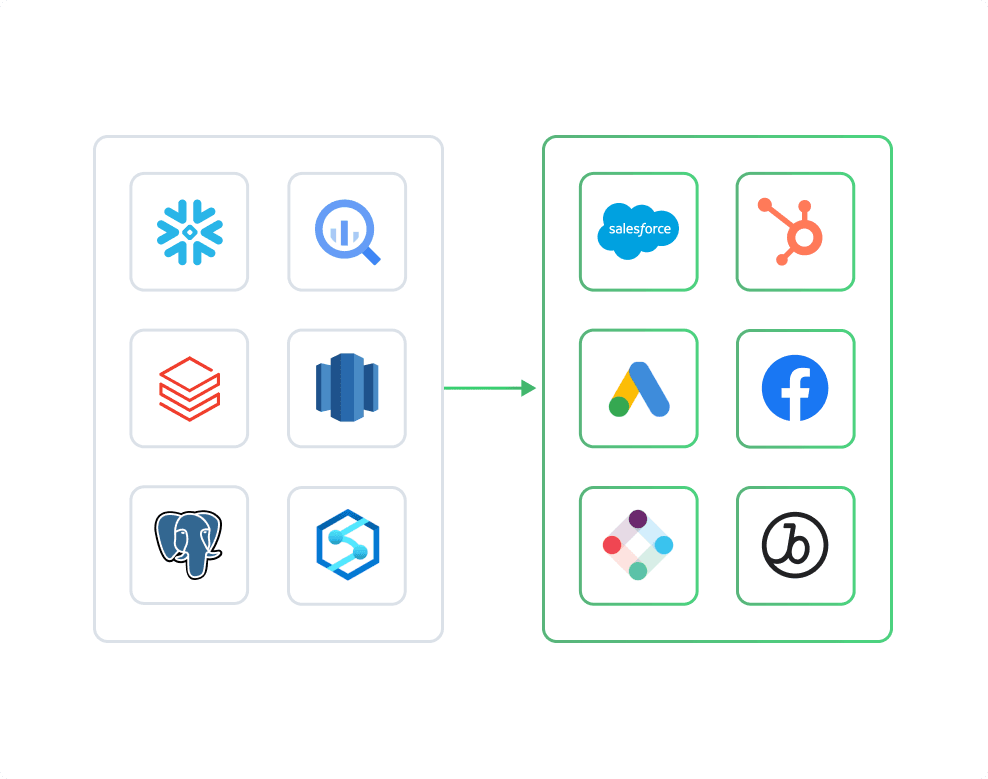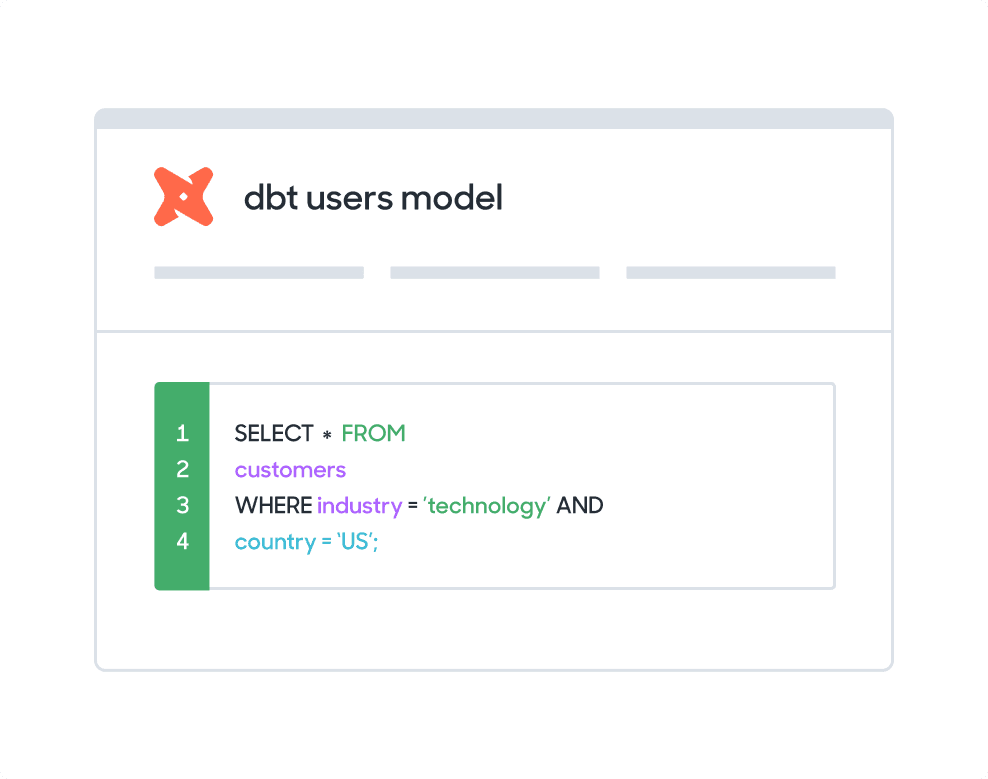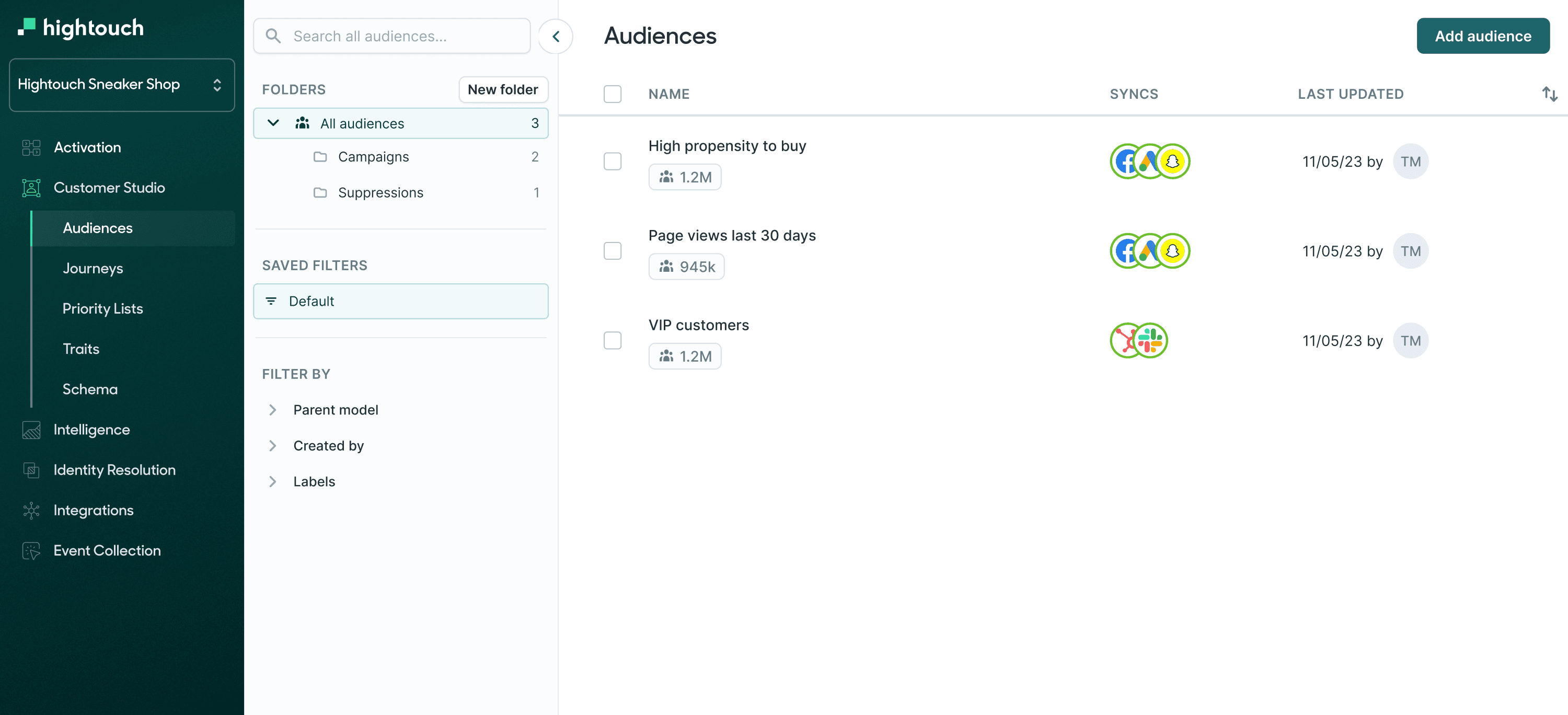Sync data from S3 to MariaDB
Connect your data from S3 to MariaDB with Hightouch. No APIs, no months-long implementations, and no CSV files. Just your data synced forever.
The world's most innovative companies choose Hightouch as their Composable CDP
Activate your data in 3 easy steps




Name

Name
Total_orders

All_orders
Last_login

Last_login
Use cases
Sync data from S3 to MariaDB
- Run complex queries on your data source and write the results into a MariaDB table.
- Exercise granular control over batch sizes and more.
- Optimized to use the LOAD DATA statement for best performance.

FAQs
There are several options to sync data between sources. You can manually build and maintain a data pipeline, use a point-to-point solution such as Zapier, or you can manually upload CSVs.
With Hightouch, you get:
- Automation: You do not need to build and maintain custom data pipelines and you do not have to have your team do manual work
- Simplicity: You avoid a complex web of integrations caused by point-to-point solutions by syncing data from your source
- Speed: You can get set up in quickly - the average Hightouch customer starts syncing data in 23 minutes
- Control: companies of all sizes have access to enterprise-level controls including observability, dbt integrations, and version control
- Security: Hightouch never stores your data and is HIPAA, GDPR, CCPA, and SOC-2 compliant
90% of all Hightouch syncs complete in 30 seconds or less, and the platform enables non-technical users to self-serve.
With Hightouch, you can sync data as frequently as it changes within your S3. You can trigger data syncs manually or schedule them to run at an interval or custom recurrence as often as once per minute.
Hightouch offers a basic mapper or advanced mapper that allows you to visually match columns from your S3 to fields in MariaDB.
Amazon S3 offers highly scalable, available, secure, and performant object storage.
MariaDB Server is one of the most popular open source relational databases. It’s made by the original developers of MySQL and guaranteed to stay open source. It is part of most cloud offerings and the default in most Linux distributions. It is built upon the values of performance, stability, and openness, and MariaDB Foundation ensures contributions will be accepted on technical merit. Recent new functionality includes advanced clustering with Galera Cluster 4, compatibility features with Oracle Database and Temporal Data Tables, allowing one to query the data as it stood at any point in the past.